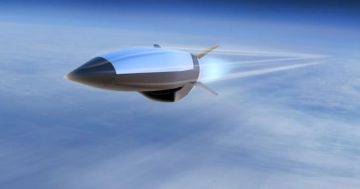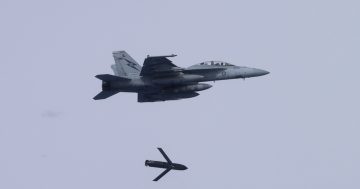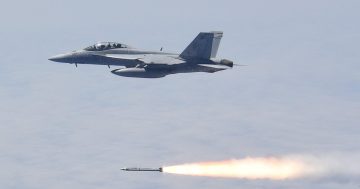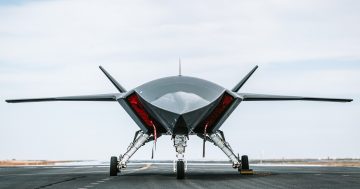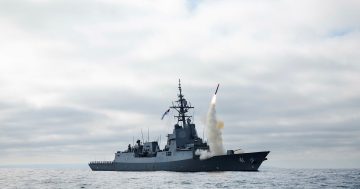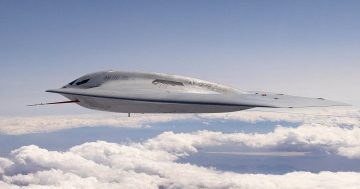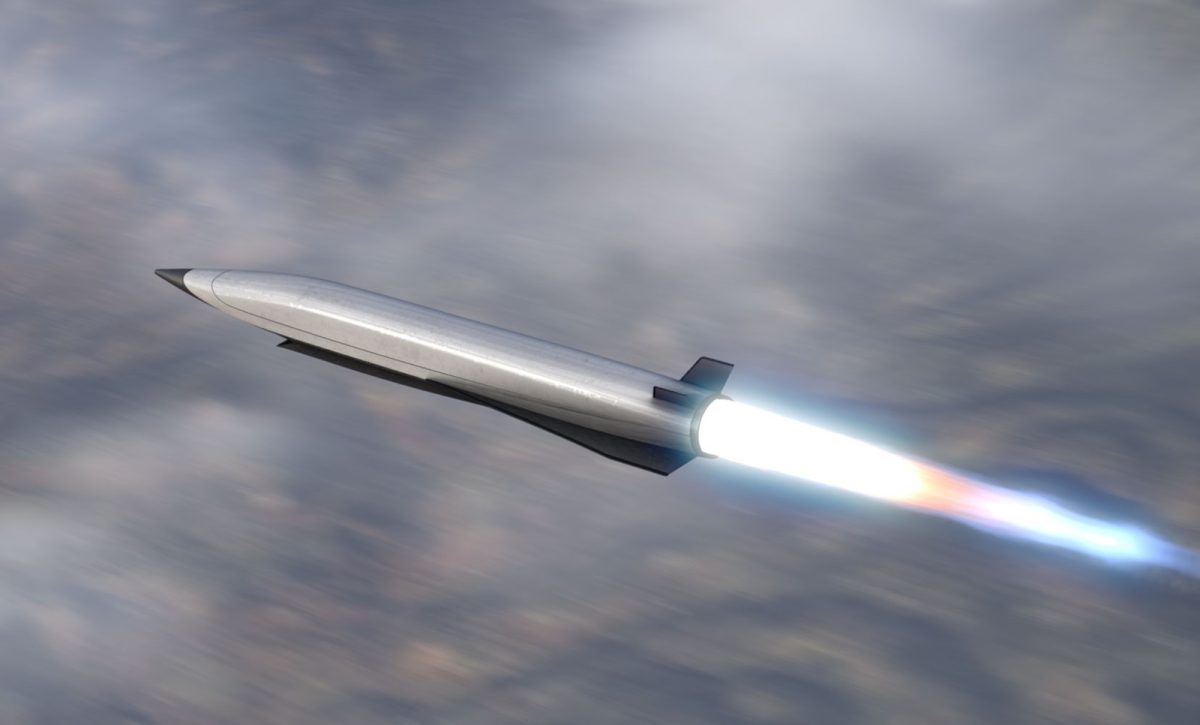
Concept art of an ‘air-breathing’ hypersonic missile. Image: Northrop Grumman.
Royal Australian Air Force (RAAF) F/A-18F Super Hornets will be used as part of a test campaign for a US-designed hypersonic strike weapon from later this year.
In a recent report into current US defence programs, the US Government Accountability Office (GAO) – the US equivalent to the Australian National Audit Office (ANAO) – highlighted ongoing schedule risk to a number of test and development programs due to a lack of resources within the US Department of Defense.
High among these programs was the US Air Force’s Hypersonic Land Attack Missile (HACM), a two-stage missile capable of being air launched and flying to and striking a target at more than five times the speed of sound.
The US has several major weapons test ranges dotted around its coastline and in the southwestern states of Nevada and New Mexico, but none with the same space, remoteness and lack of airspace restrictions as Woomera in South Australia or the Delamere and Bradshaw ranges in the Northern Territory.
And with the implementation of the AUKUS construct, in particular the Pillar 2 elements which include joint development and exploitation of hypersonic technologies, there are now fewer export and security restrictions on the US in releasing or sharing these technologies with Australia.
The GAO report says test range availability and limitations in the US have been an issue for hypersonic programs.
“To alleviate this issue, the HACM program is integrated with the Southern Cross Integrated Flight Research Experiment [SCIFiRE], a joint US Australian effort,” it says.
“Through this joint effort, several of HACM’s planned flight tests will occur in Australia using Australian Air Force F/A-18s.”
SCIFiRE is a 15-year joint Australia and US collaborative agreement to develop and test hypersonic cruise missile prototypes and to conduct research into hypersonic scramjets, rocket motors, sensors, and advanced manufacturing materials.
The Morrison Government’s 2020 Defence Strategic Update and Force Structure Plan (DSU/FSP) included funding of between $6 billion and $9 billion to conduct high-speed long-range strike, including hypersonic research out to 2040.
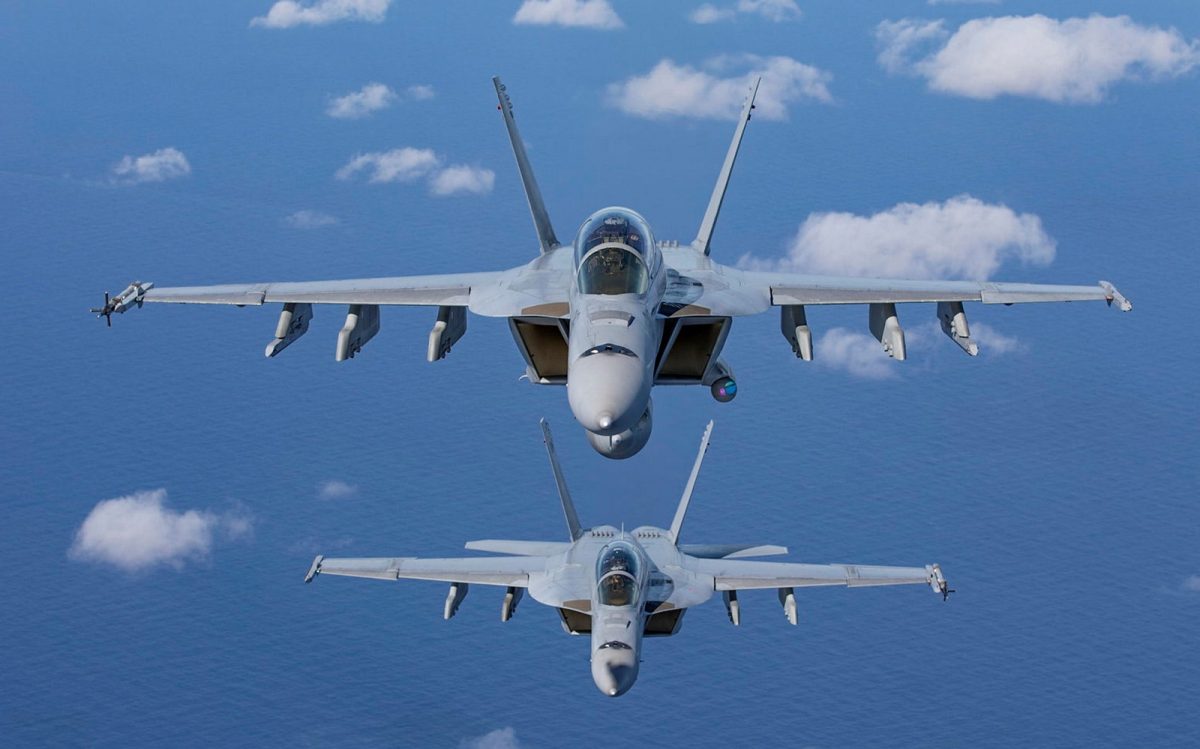
The F/A-18F Super Hornet will likely be the RAAF’s primary stand-off weapons launcher. Photo: ADF.
The RAAF operates 24 Boeing F/A-18F strike aircraft which have already been identified as launch aircraft for any future hypersonic weapon the RAAF may acquire, so it makes sense that they be preferred for the test campaign.
HACM is designed and built by Raytheon (RTX) and Northrop Grumman who were awarded a US$985 million (A$1.5 billion) contract in September 2022 to develop the system.
The missile consists of two stages – a rocket booster and an ‘air-breathing’ scramjet ‘cruiser’ engine. Once it has been launched and accelerated to hypersonic speeds by the booster, it separates and the scramjet takes over for the cruise and terminal flight into the target.
The US Air Force has previously stated it would integrate the HACM with its Boeing F-15E Strike Eagle fleet, but it is likely it will also be adapted for use on other aircraft. The RAAF has previously said its F/A-18F and F-35 fighters and possibly the larger P-8A Poseidon maritime response aircraft are future hypersonic weapon launch platforms.
The GAO says the US Air Force plans to produce 13 missiles during a rapid prototyping effort which includes test missiles, spares, and rounds for a residual operational capability.
It says development of the HACM rapid prototyping effort commenced in 2022 and was based on another US Defense Advanced Research Projects Agency (DARPA) scramjet demonstrator known as the Hypersonic Air-breathing Weapon Concept (HAWC).
Designed to enter service in 2027, HACM is one of at least five US hypersonic missile programs in development.
Others include the US Air Force’s Lockheed Martin AGM-183A Air-Launched Rapid Response Weapon (ARRW) which is a larger and longer-range weapon designed to be launched from a bomber, and which after several failures, conducted its first successful test flight from a B-52H in May 2022.
The US Navy is developing the Conventional Prompt Strike (CPS) system, a hypersonic boost-glide missile program to develop a system that can be launched from surface ships and submarines.
The US Navy also has its own Hypersonic Air-Launched Offensive (HALO) anti-ship missile requirement which is designed to be launched by aircraft carrier-based aircraft, but which otherwise appears on face value to align with many of the same requirements as HACM. If the integration with the RAAF’s F/A-18Fs – an aircraft operated by the US Navy – is successful, the US Navy will likely look much harder at HACM.
Not to be outdone, the US Army is running its Long-Range Hypersonic Weapon (LRHW) program which is aiming to also develop a hypersonic boost-glide weapon for fixed and mobile surface-launched applications.


